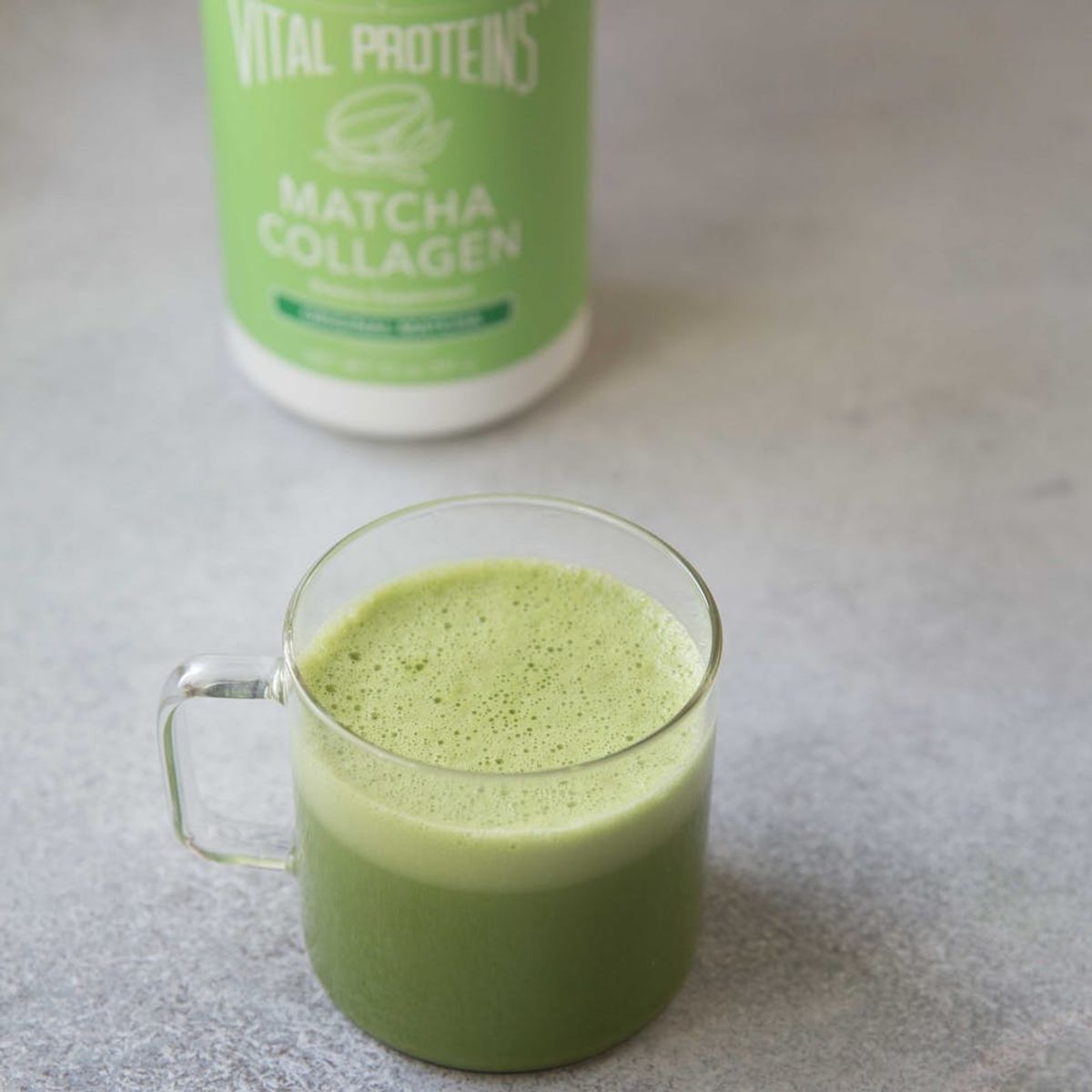Matcha made in heaven!
Bulletproof Coffee Fanatics Need to Try Matcha Collagen

You’ve probably seen Vital Proteins’ bright-colored tubs or single-serve packets of collagen peptides powder in your Instagram feed, especially if you track paleo, Whole30, or healthy food bloggers. Since we’ve already bought and tried the company’s unflavored collagen peptides in hopes of achieving stronger nails and bones, reduced joint pain, and hair growth, we’re ready to take on the sub-trend that adds matcha into the mix. We snatched a tub of Vital Proteins matcha-flavored collagen to see what all the fuss is about.

First, here’s the lowdown on collagen peptides. Derived from the bone, skin, and connective tissue of animals, the powder’s made from gelatin proteins broken down by an enzymatic process, so it doesn’t gel in liquids (like Jell-O). Sold as a dietary supplement, Vital Proteins collagen also claims it also increases athletic performance and reduces injury. In its latest innovation, the company, which became a breakout sensation in 2016, pairs the collagen with another powerful supplement: immune-supporting matcha that’s rich in antioxidants and acts as a natural detoxifer. Though VP doesn’t tell you how much caffeine it contains per serving, traditionally a teaspoon of matcha is the equivalent of 1/3 of a cup of coffee (around 30 milligrams of caffeine).
One scoop of matcha collagen yields nine grams of protein and yet contains only 50 calories, three grams of carbs, and two grams of sugar. The gluten-free, dairy-free, and sugar-free supplement earns a paleo and Whole30 stamp of approval. Sounds good so far, right? Since you can add a scoop of it to smoothies, hot drinks, or even into healthier baked goods, it’s an easy way to add a boost of nutrients to just about anything.

For this taste test, we picked up a 12-ounce bright-green tub of the original flavor of matcha collagen. It runs about $50, which works out to 48 cents per cup. The color of the matcha is brighter than we expected, and it smells like freshly cut summer grass (what powdered green tea ought to). As for the flavor? Unflavored collagen peptides are relatively tasteless and odorless, though sometimes a bit of gamey flavor breaks through, so the natural nuttiness of the matcha does a good job of masking any potential funkiness. Made with just hot water, the green tea flavor is distinct, though we do wish it were a bit bolder. If you prefer a creamy matcha (think Starbucks), then you’ll appreciate the almond milk latte, which completely eclipses the grassy taste.

We’ve been sipping it regularly for several months and noticed our hair looks more glossy and full, and our nails feel less flimsy. Though VP’s matcha collagen is convenient, at the end of the day, we recommend sticking with unflavored collagen and adding your own matcha green tea powder for homemade collagen lattes. You’ll be able to control the amount of caffeine you consume and can alter the flavor to your liking.
How do you drink matcha and collagen? Tell us @BritandCo.
(Photos by Annelies Zijderveld / Brit + Co)













